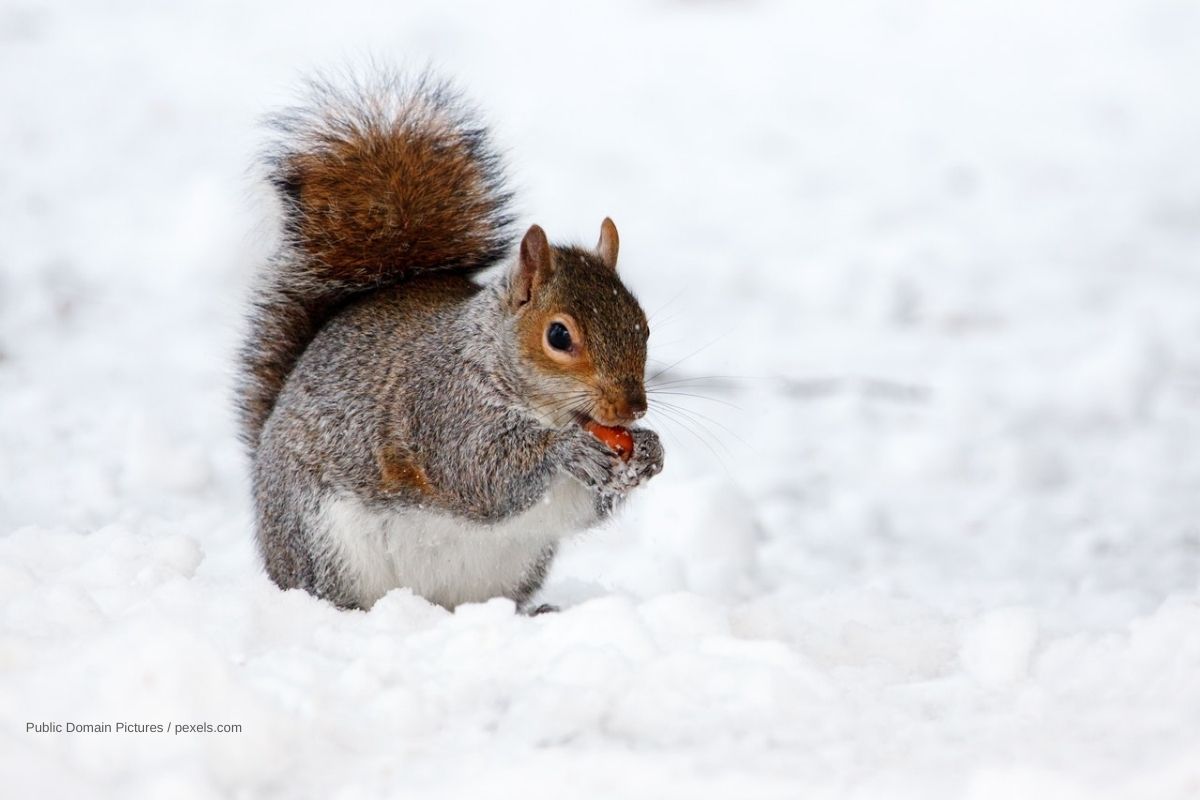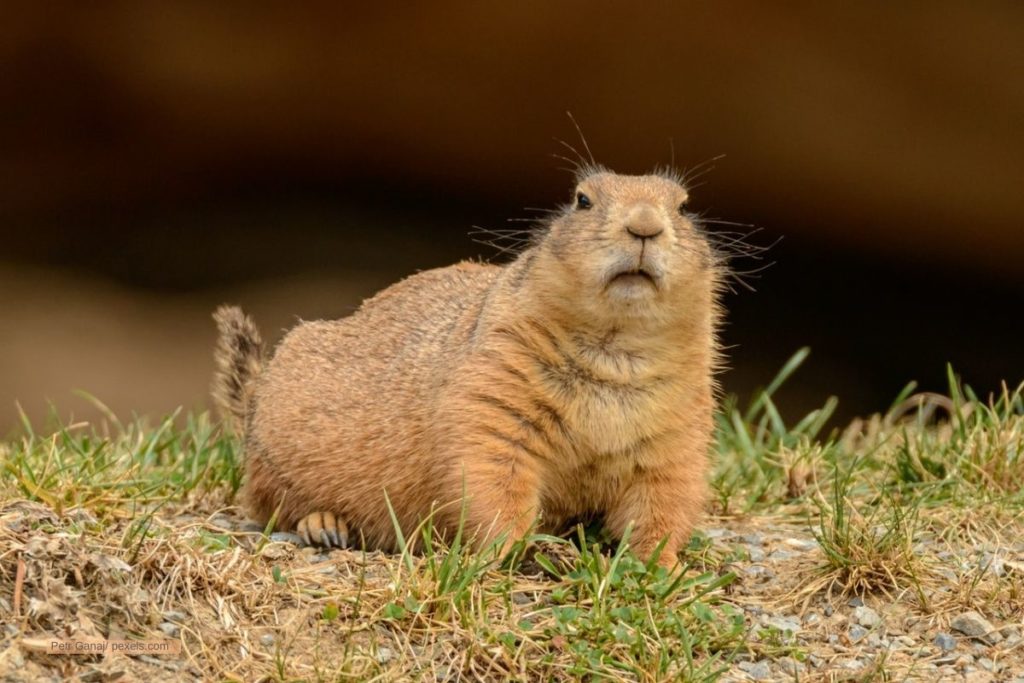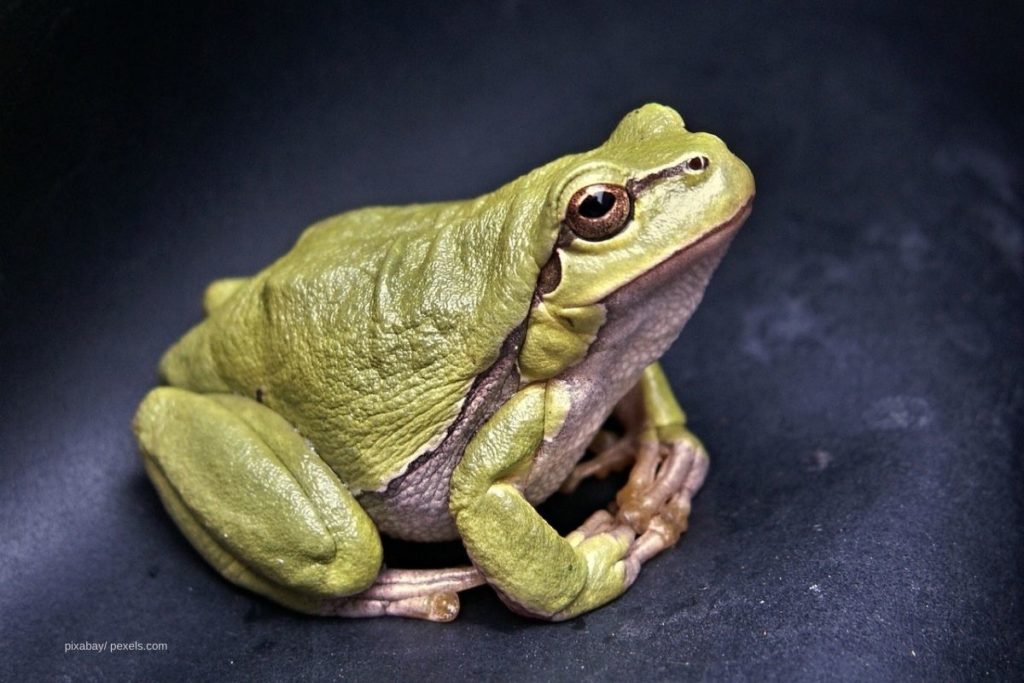Fascination hibernation – how animals get through the cold season

Every year, between September and November, migratory birds start their journey southwards in time to escape the freezing temperatures that prevail in the northern hemisphere during winter. This behaviour sounds quite logical to us humans: if it gets too cold, some birds simply fly to where it is warm. But how do other species survive the cold winter if they are unable to spread their wings and fly away? They have to find different solutions! Hibernation is only one of them. Find out more about this phenomenon and which species fall into a deep sleep every winter.
Hibernation – the sleepy heads among the animals
 Marmots and dormice are absolute record holders in terms of hibernation, because every year they fall into a seven-month sleep in early autumn, which lasts until spring. They eat as much fat as possible for this purpose and look for a frost-free shelter such as piles of leaves, small caves or something similar when winter sets in. Their body temperature drops to around 0°C, their heart does not beat as often, and they breathe much less. In addition, the intestines and stomach can be minimized by half to save energy. It is, however, a misconception that hibernators now remain in this state for the next few months and do not wake up again until spring. In fact, sleep phases take turns with waking phases, which are only of short duration to save energy reserves. But why do some animals actually sleep in the winter months? The answer is quite simple: In winter, food becomes scarce and during hibernation, animals manage to lower their metabolism to a level where they can survive despite the scarcity of food. When the first warm rays of sunshine hit the earth in spring, the spring awakening literally begins. Triggered by the warm temperatures, the hibernators release hormones which signal the body to slowly raise its temperature again. At a body temperature of 15°C and above, the sleepers start to move slowly until they are fully awake again after a while.
Marmots and dormice are absolute record holders in terms of hibernation, because every year they fall into a seven-month sleep in early autumn, which lasts until spring. They eat as much fat as possible for this purpose and look for a frost-free shelter such as piles of leaves, small caves or something similar when winter sets in. Their body temperature drops to around 0°C, their heart does not beat as often, and they breathe much less. In addition, the intestines and stomach can be minimized by half to save energy. It is, however, a misconception that hibernators now remain in this state for the next few months and do not wake up again until spring. In fact, sleep phases take turns with waking phases, which are only of short duration to save energy reserves. But why do some animals actually sleep in the winter months? The answer is quite simple: In winter, food becomes scarce and during hibernation, animals manage to lower their metabolism to a level where they can survive despite the scarcity of food. When the first warm rays of sunshine hit the earth in spring, the spring awakening literally begins. Triggered by the warm temperatures, the hibernators release hormones which signal the body to slowly raise its temperature again. At a body temperature of 15°C and above, the sleepers start to move slowly until they are fully awake again after a while.
Winter rest – hibernation with breaks
Unlike the marmot, squirrels, raccoons and field hamsters, for example, only have a winter's rest. One difference to hibernation is the body temperature, which does not drop during winter rest. Heartbeat and respiration slow down, but do not fall as much as during hibernation. Animals that rest during winter look for dry, sheltered accommodation for the cold season. However, they do not sleep through winter completely, but wake up from their rest more often. Then they look for food to replenish their energy reserves.
Winter rigidity – better not move
Strikingly only mammals hibernate and rest in winter. But what about amphibians and reptiles, which are just as incapable of moving to the warm south in winter?  Animals such as frogs, lizards, and snails, which do not have thick fur, fall into a so-called winter rigidity. The reason is that they belong to the homoiothermic animals, which means that their body temperature always corresponds to the surrounding temperature. Their thin skin offers no protection against the cold, so their body temperature inevitably adapts to the outside temperature, which causes them to breathe more slowly and to fall into a state of rigidity. During this time there is hardly any metabolic activity and only an increased concentration of glucose prevents life-threatening freezing of the body fluids. Fascinating how animals are able to constantly adapt to their environment and weather conditions in order to survive, isn't it? How lucky, that we humans can rely on a warm heating system or a cosy fireplace during the cold winter months!
Animals such as frogs, lizards, and snails, which do not have thick fur, fall into a so-called winter rigidity. The reason is that they belong to the homoiothermic animals, which means that their body temperature always corresponds to the surrounding temperature. Their thin skin offers no protection against the cold, so their body temperature inevitably adapts to the outside temperature, which causes them to breathe more slowly and to fall into a state of rigidity. During this time there is hardly any metabolic activity and only an increased concentration of glucose prevents life-threatening freezing of the body fluids. Fascinating how animals are able to constantly adapt to their environment and weather conditions in order to survive, isn't it? How lucky, that we humans can rely on a warm heating system or a cosy fireplace during the cold winter months!
Do bears hibernate?
Bears are taking their winter rest between October and December. During this time, they often stay in caves which they have built themselves. Surprisingly, the reason for the winter rest is not the cold weather but the lack of food during this period. That is why the bear has to eat enough during the fall, so that it can live without any food for three months. During this period, the bear loses a lot of weight and must save its energy.But does the bear hibernate? There is still some uncertainty about the exact definition and kind of rest the bear is taking. It is not identical to the hibernation of a groundhog or a hedgehog, because bears can easily wake up and fend off attackers as well as defend themselves in case of emergency. Basically, every bear is different. There is not just one way of life. Some bears are even living without any winter rest, because they have learned how to find food during the cold months.
Hedgehogs and their hibernation
Sometimes, hedgehogs already have trouble finding food in October. That is when they start to build their nests for the winter out of dead wood, brushwood and leaves. To be protected from the cold temperatures, the animal is looking for hollows in the ground, hiding under hedges or under piles of brushwood. If you cannot offer any natural shelters, you can build a small house for hedgehogs in your garden. When temperatures are rising, hedgehogs might wake up from their hibernation. If this happens multiple times during a winter season, the hedgehog can lose energy because there is not enough food available. To help hedgehogs in this situation you can provide a bowl with some cat food and water outside. But be careful! Only hedgehogs who are clearly malnourished or sick should be cared and provided for.
Hedgehogs are hibernating from the middle of November until March or April and in some cases even until May. In comparison to the bear, the hedgehogs cannot defend themselves or escape in case of emergency. Therefore, it is important to not move the nest around during that time.
Photo credits:
Public Domain Pictures / pexels.com
Petr Ganaj / pexels.com
pixabay / pexels.com
pixabay / pexels.com
pixabay / pexels.com
